Historic Connection
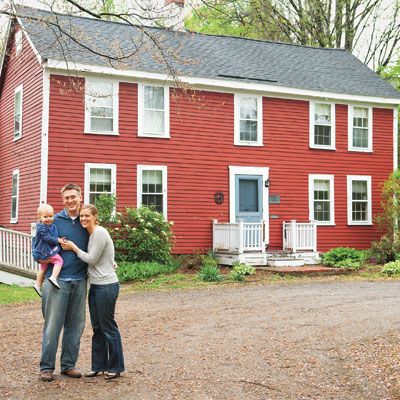
Joe and Becky Titlow never questioned the details they’d read about their historic clapboard home in Bedford, Massachusetts, the subject of the fall 2011 season of This Old House TV. All the history books say that the house, known as the Nathaniel Page homestead, was built around 1687 by Mr. Page himself, whose grandson, Nathaniel Page III, was a flag bearer during the Revolutionary War. And it’s listed on the National Register of Historic Places with a 1687 construction date. “These are all reliable sources. We figured the experts had done their homework,” says Becky.
Shown: Joe and Becky Titlow in front of the Nathaniel Page homestead, which they’ve called home since 2007. The oldest structure is in front, and there have been two additions, a rear one in the 1800s and one on its west side in 2004. The Titlows are updating the kitchen in the rear addition and adding a family room and a new entry.
How Old?
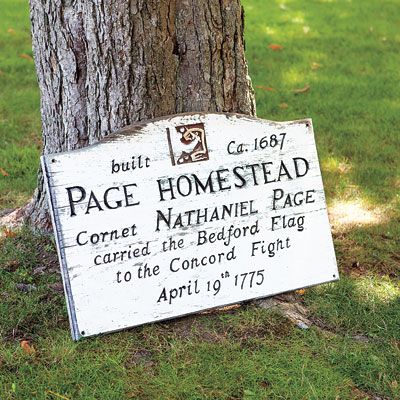
But TOH general contractor Tom Silva had his doubts. When visiting the Titlows to help them plan a renovation, he stumbled upon some evidence that made him believe it had been built decades later than claimed. So, before work began, TOH TV teamed up with a couple of old-house sleuths to do some detective work on what became a budding mystery of the house’s true age. Read on to learn how all the clues added up.
Shown: A wood plaque bears the purported original construction date.
Early Clues
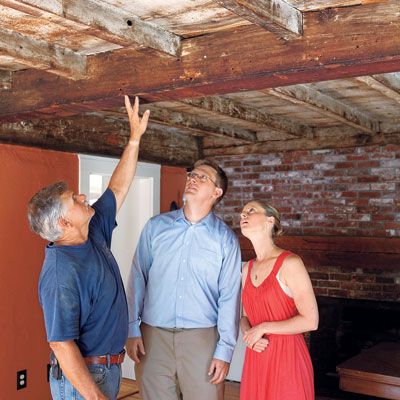
With decades of renovations under his toolbelt, Tom has a keen eye for architectural and structural details that most people wouldn’t give a second glance. The first thing that tipped him off was a rounded, beaded edge on the long center support beam in the study (known as a summer beam). “It looked like one from the house I grew up in, which was built around 1750,” he says.
Shown: Tom Silva points out the beaded edge on the long center support beam in the study’s ceiling—one of the first signs that the house was not as old as claimed.
All in the Details
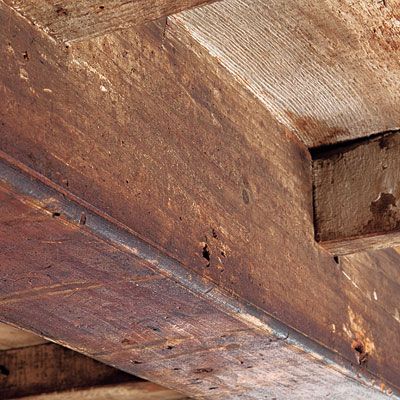
Next, in the half-height basement, Tom noticed floor joists that were curiously advanced for what was supposed to be a 17th-century structure. “Back then, joists were just logs split in half, and floorboards were laid on the flat side,” he explains. “But these joists were milled to a rectangular shape.”
Intrigued by Tom’s observations, everyone agreed that more study was needed. So the TOH team put local architectural historians Joseph Cornish and Anne Grady on the case. These two investigators, with their vast knowledge of early New England house styles, sussed out more clues that would help paint a clearer picture of just how old the house really was.
Shown: The beaded edge was likely added during construction after the beam was installed, says Tom Silva.
Crown Molding Added Later
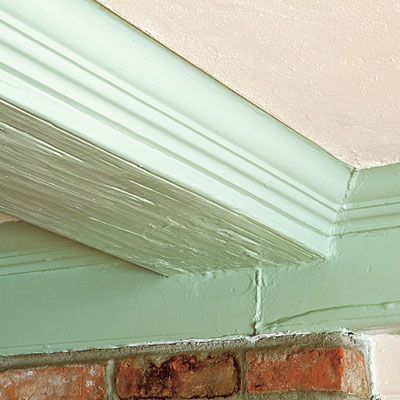
The dining room’s center beam is original, but the beaded edge is masked by paint. Crown molding was likely added in the mid- to late 1800s to give the room a fashionable Greek Revival look.
Gathering Evidence

Historians have had reason to believe the Nathaniel Page homestead was built between 1600 and 1720, an era known as the First Period, when British colonists first settled New England. Records show that the land was purchased in the mid-1600s, and the house’s wood framing and original central chimney (long since dismantled) are common features of this era.
But homes built during the Georgian era, which followed the First Period and lasted from roughly 1720 to 1790, often resemble their older cousins. “We looked for details that would make this house fall into one camp or the other,” says Cornish.
He and Grady inspected the rooms one by one and noted an attic door that likely dates from the 1600s. “What tells me this are the iron strap hinges, the thumb-latch closure, and the board-and-batten construction,” says Cornish. The front door is built in a similar way.
Shown: Joe Cornish and homeowners Joe and Becky Titlow consult a reference book on early New England houses to match up architectural details.
A Mysterious Past
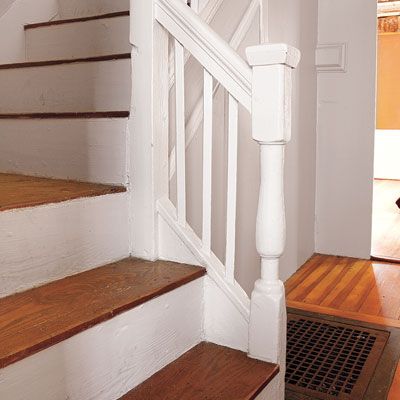
Other features told a different tale. The staircase’s newel posts, which Cornish says are original, closely resemble newels in the early-18th-century White-Ellery House, in Gloucester, Mass. “You wouldn’t see vase-like shapes such as this in a 1600s home,” he says. In a second-floor bedroom, gunstock posts (named for their resemblance to muskets) have a flared top that allows room for a framing joint connecting the walls and the roof. But, unlike posts from the 1600s, they lack decorative carvings. He and Grady also believe that paneled, Georgian-style interior doors were original to the house, not added later. And two major features were hard to miss: The windows were placed more symmetrically, and the roof was pitched less steeply, than those typically seen on First Period houses.
Turns out Tom’s hunch was correct. The investigation uncovered many more Georgian than First Period elements. Cornish and Grady agreed that a more accurate construction date for the Nathaniel Page homestead is circa 1720—more than 30 years later than all the history books said.
Shown: Replacement balusters were likely installed in the early 1800s, when simpler details prevailed. The newel post and rail on the staircase are original, and conform with 18th-century styles.
Hints in the Paneling

A gunstock post, named for its resemblance to a musket, lacks carvings usually found in 17th-century construction. The paneling next to it is “very Georgian,” says Joe Cornish.
Common Mistakes
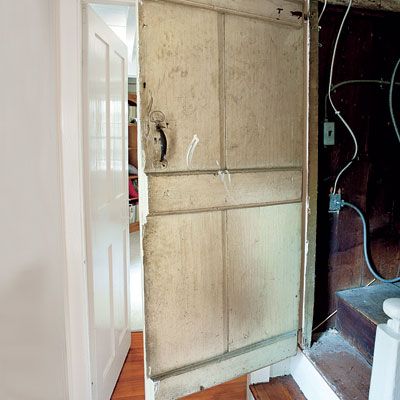
So the historical record will be corrected. But why did everyone get it wrong for so long? Basically, no one had studied the house closely enough, which is common with very old structures. “The 1687 date in the National Register came from the application for the list, which was filled out in 1977,” says Grady. Today, applications are scrutinized more closely and require further proof of age, including photographs that help date the architectural elements. Had such photos been reviewed then, the date would very likely have been modified.
TOH master carpenter Norm Abram adds that homes built centuries ago incorporated new and old parts out of necessity, which causes confusion when assessing a construction date. “It was harder to build things then, so people reused parts such as doors and windows. You can’t just assume that a house is as old as the oldest piece of it,” he says. This would explain the presence of the 17th-century doors.
The Titlows, meanwhile, plan to keep the circa 1720 structure largely intact, while overhauling the kitchen and adding a family room and an entry with a mudroom and powder room. Says Becky, “Now we just need to add another item to our to-do list: changing the historical plaque.”
Shown: The attic door was likely made in the 1600s and installed in a different house before it was used here.
